Sweet Success: Indulging in Traditional Chinese New Year Desserts for Prosperity and Joy
As the vibrant festivities of Chinese New Year, also known as Lunar New Year or Spring Festival, arrive once more, it’s time to immerse ourselves in the rich cultural tapestry that defines this auspicious occasion. For generations, food has been at the heart of these celebrations, with each dish carrying profound symbolic meaning and a wish for good fortune in the year ahead. Among the most cherished culinary traditions are the delightful desserts, sweet treats that do far more than just satisfy a craving. These traditional Chinese New Year desserts are edible emblems of hope, prosperity, unity, and happiness, crafted with meticulous care and steeped in centuries of history.
From chewy glutinous rice cakes to fragrant floral jellies, the array of Chinese sweets prepared for the Spring Festival offers a fascinating glimpse into the deep-rooted customs and beliefs of Chinese culture. Each bite is a journey through tradition, a taste of history, and a silent blessing for a brighter future. Join us as we explore ten iconic Chinese New Year desserts, delving into their unique flavors, textures, and the beautiful meanings they bring to the celebration. Get ready to discover why these delectable treats are absolutely essential for a truly sweet and prosperous start to the Lunar New New Year.
1. Nian Gao (Sticky Rice Cake)

About: No Chinese New Year celebration is complete without Nian Gao, often translated as Sticky Rice Cake. This quintessential festive treat is made primarily from glutinous rice flour, which gives it its signature chewy, almost mochi-like texture, and is typically sweetened with brown sugar. Its preparation varies regionally, with some versions incorporating red dates or nuts, while others are plain and ready to be pan-fried or steamed before serving. Nian Gao can be enjoyed in various ways: steamed until soft and warm, pan-fried to achieve a crispy exterior and gooey interior, or even dipped in egg batter for an extra layer of flavor. Its presence is ubiquitous during the Spring Festival, making it a cornerstone of traditional Chinese New Year desserts.
What It Symbolizes: The name “Nian Gao” itself carries profound auspicious meaning. In Mandarin Chinese, “nian” means “year,” and “gao” (糕) sounds identical to “gao” (高), meaning “high” or “tall.” This clever homophone creates the phrase “nian nian gao sheng” (年年高升), which translates to “a higher year” or “increasing prosperity year after year.” Eating Nian Gao is therefore a powerful wish for continuous improvement, success in career or studies, and overall progress in the coming year. It’s a symbolic embrace of growth and aspiration, making it much more than just a sweet treat—it’s an edible blessing for an upward journey.
Recipe Page: Eager to create your own symbol of ascent? Judy from The Woks of Life provides an excellent and authentic Nian Gao recipe. Find the detailed instructions here: The Woks of Life Nian Gao Recipe.
2. Fa Gao (Fortune Cake)
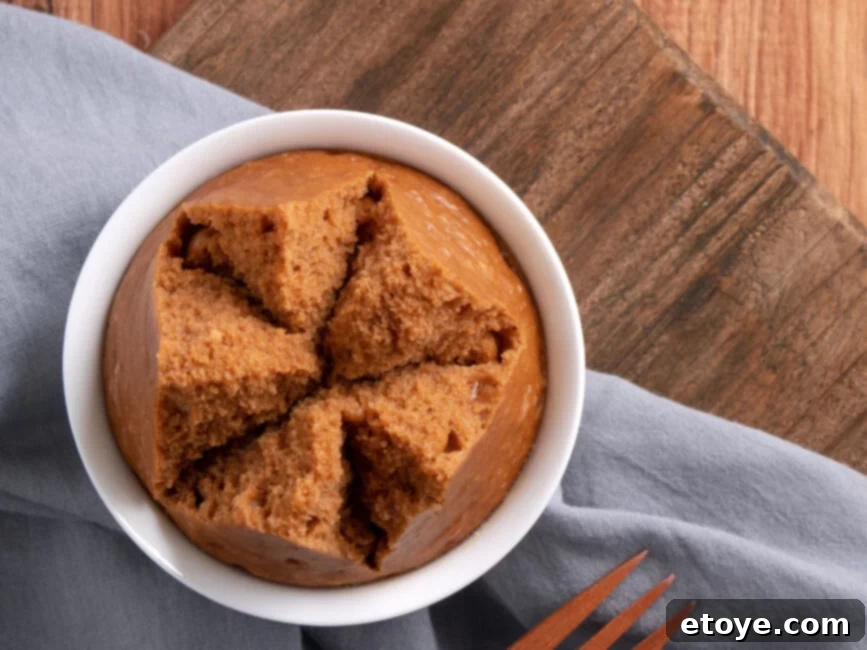
About: Next on our delightful journey through Chinese New Year desserts is Fa Gao, affectionately known as Fortune Cake. This steamed cake stands out with its incredibly fluffy, sponge-like texture, often appearing in soft pastel hues or vibrant colors to symbolize joy and festivity. Made with surprisingly simple ingredients like rice flour, sugar, and yeast, the true magic of Fa Gao lies in its preparation. When properly steamed, the top of the cake splits open, creating a beautiful, bloom-like pattern that resembles a blossoming flower or a cheerful smile. This unique characteristic is not only visually appealing but also holds significant symbolic value, making the process of making and eating Fa Gao a truly special experience.
What It Symbolizes: Fa Gao is deeply intertwined with wishes for good fortune and prosperity. The “fa” in its name (发) is a homophone for “fa cai” (发财), meaning “to get rich” or “to prosper,” while “gao” simply means “cake.” Therefore, eating Fa Gao during the Spring Festival is an edible declaration for wealth and abundant success in the new year. Furthermore, the way the cake “blooms” or splits open at the top is symbolic of “opening up” to new opportunities, embracing expansion, and a future filled with prosperity. It’s a beautifully simple yet profoundly meaningful dessert, inviting good vibes and financial well-being into one’s life.
Recipe Page: If you’re ready to invite some prosperity into your kitchen, Elaine from China Sichuan Food offers a fantastic recipe for homemade Fa Gao. Discover how to create these auspicious cakes here: China Sichuan Food Fa Gao Recipe.
3. Tang Yuan (Sweet Rice Balls)

About: Tang Yuan, or Sweet Rice Balls, are charming, bite-sized delights that embody comfort and togetherness. These small, perfectly round spheres are crafted from glutinous rice flour, resulting in a delightfully chewy texture. While some Tang Yuan are served plain, others are filled with an assortment of sweet fillings, such as rich black sesame paste, sweet red bean paste, or even creamy peanut butter. They are traditionally served floating in a warm, subtly sweet ginger-infused soup or a clear sugar syrup, making them a soothing and heartwarming dessert. Though often associated with the Lantern Festival, Tang Yuan are also a popular choice for New Year’s Eve dinner, symbolizing family reunion and completion.
What It Symbolizes: In Chinese culture, the distinct round shape of Tang Yuan holds powerful symbolism, representing completeness, family unity, and togetherness (团圆, “tuányuán”). Eating these sweet glutinous rice balls during the festive period is a profound way of expressing and reinforcing family bonds, signaling a wish for harmony and the well-being of all loved ones. The act of sharing Tang Yuan signifies the importance of family reunion and the cyclical nature of life, wishing for a complete and harmonious family circle throughout the year. It’s a sweet, comforting reminder of the strength and warmth found within family connections.
Recipe Page: Craving these symbols of unity? Wei from Red House Spice provides a fantastic recipe for Tang Yuan that you can easily follow. Get the full instructions here: Red House Spice Tang Yuan Recipe.
4. Almond Cookies
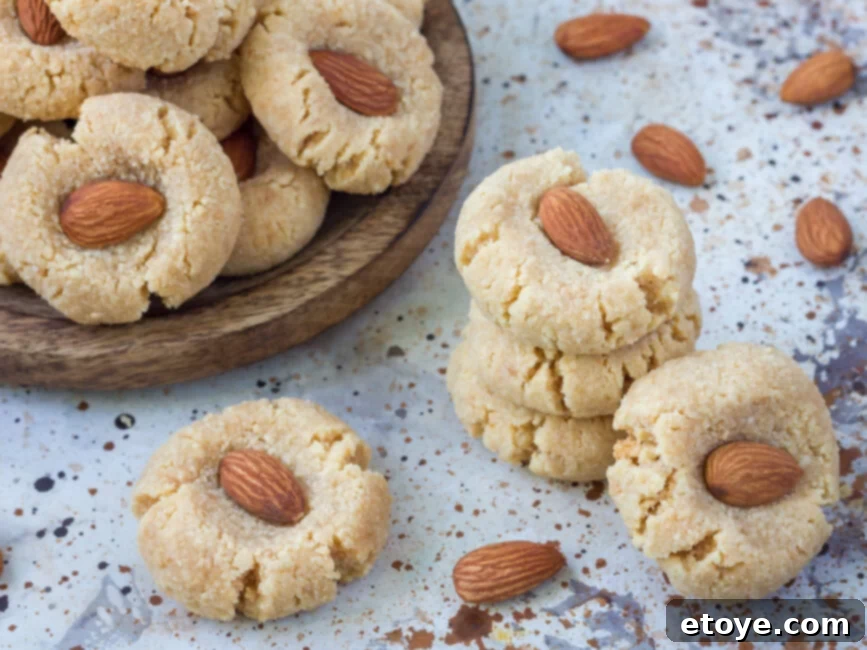
About: Chinese Almond Cookies are a beloved staple in Chinese cuisine, particularly during the holiday season, but enjoyed year-round for their delightful flavor and texture. These buttery, crumbly cookies are made with almond flour and often topped with a whole almond, offering a distinctive nutty aroma and a perfect balance of sweetness. Their crisp edges and melt-in-your-mouth interior make them incredibly addictive, making it hard to stop at just one. They are a common offering in Chinese bakeries and households during Chinese New Year, providing a comforting and familiar treat that appeals to all ages. Their rich flavor and satisfying crunch make them a perfect accompaniment to a cup of tea or as a light dessert.
What It Symbolizes: Beyond their delicious taste, Almond Cookies carry auspicious meanings. In Chinese culture, almonds themselves are symbols of good fortune and prosperity. Additionally, the round shape and golden-brown hue of many almond cookies strikingly resemble traditional Chinese gold coins or ingots, which are potent symbols of wealth and monetary success. Thus, these delectable cookies are seen as little edible charms, inviting financial abundance and good luck into the home for the coming year. Gifting or sharing almond cookies is a sweet way to extend wishes of wealth and prosperity to friends and family.
Recipe Page: Fancy trying your hand at baking these lucky treats? Jeanette from Wok & Kin has an excellent Chinese Almond Cookies recipe that is sure to impress. Find the detailed instructions here: Wok & Kin Almond Cookies Recipe.
5. Pineapple Tarts

About: Originating from Southeast Asian Chinese communities, Pineapple Tarts have become an incredibly popular and indispensable treat during the Lunar New Year celebrations, particularly in Malaysia, Singapore, and Indonesia. These small, exquisite pastries feature a delicate, buttery, and melt-in-your-mouth pastry crust that encases a generous dollop of sweet and tangy homemade pineapple jam. Often crafted into intricate shapes or stamped with auspicious symbols, their vibrant yellow color and delightful flavor instantly brighten any festive table. The meticulous process of preparing the pineapple jam, often slowly simmered to perfection, is a labor of love that results in a truly memorable dessert, eagerly anticipated each year.
What It Symbolizes: The auspiciousness of Pineapple Tarts stems directly from the fruit itself. In several Chinese dialects, particularly Hokkien and Cantonese, the word for pineapple, “ong lai,” sounds remarkably similar to “wang lai” (旺来), which translates to “fortune comes” or “prosperity arrives.” Thus, indulging in Pineapple Tarts is a delightful way to metaphorically invite wealth, good luck, and a continuous stream of blessings into your life for the new year. Their golden hue also reinforces the association with gold and riches. Eating and sharing these tarts is a joyous tradition, signifying an open invitation for all the good things the year has to offer.
Recipe Page: Ready to welcome fortune into your home? Bee from Rasa Malaysia offers a fantastic Pineapple Tarts recipe that is a definite must-try for their authentic taste. Discover the full recipe here: Rasa Malaysia Pineapple Tarts Recipe.
6. Ba Bao Fan (Eight-Treasure Rice Pudding)
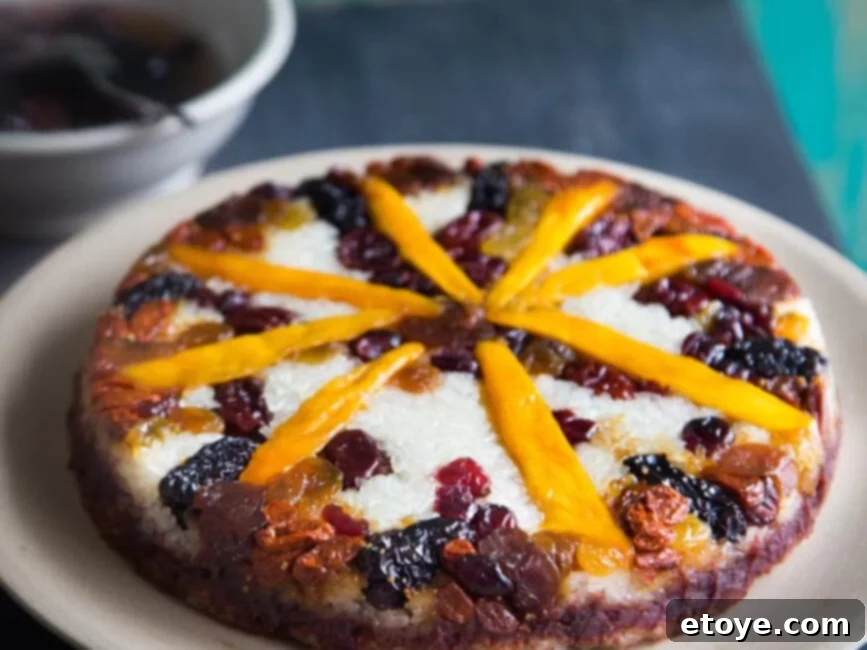
Photo Credit: Whattocooktoday.com
About: Ba Bao Fan, or Eight-Treasure Rice Pudding, is a stunning masterpiece among traditional Chinese desserts, renowned for its intricate presentation and rich flavors. This elaborate steamed pudding is made from glutinous rice, carefully arranged in a bowl and layered with a vibrant assortment of “eight treasures.” These typically include sweet red bean paste, glistening candied fruits (like cherries, melon, or kumquats), lotus seeds, dried longans, and various nuts such as walnuts or almonds. Once steamed, the pudding is inverted onto a plate, revealing a beautiful mosaic of colorful ingredients. Its sweet, sticky, and deeply satisfying taste makes it a festive highlight, often served at the end of a grand reunion dinner, symbolizing sweetness and abundance.
What It Symbolizes: Every ingredient in Ba Bao Fan is chosen for its symbolic meaning, collectively making it a literal treasure trove of good wishes for the Chinese New Year. The number eight (八, “bā”) is considered highly auspicious in Chinese culture, strongly associated with luck, wealth, and prosperity, as it sounds like “fa” (发), meaning “to get rich.” Therefore, a dessert with “eight treasures” is like a jackpot of good fortune. Each candied fruit, seed, and nut also brings its own blessing, such as sweetness, fertility, or longevity. Ba Bao Fan is a powerful culinary representation of abundance, prosperity, and a wish for a truly rich and fulfilling year ahead.
Recipe Page: For those who enjoy an adventurous culinary challenge, Ellen from The Hong Kong Cookery (shared via What To Cook Today) offers an authentic Eight-Treasure Rice Pudding recipe. Embark on this delightful cooking journey here: The What To Cook Today Ba Bao Fan Recipe.
7. Hong Kong Egg Tarts

About: Hong Kong Egg Tarts are veritable crown jewels of Cantonese cuisine and a must-have for any dim sum experience. While not exclusively a Chinese New Year dessert, their popularity and comforting appeal make them a welcome addition to any festive table. These iconic tarts feature two main components: a perfectly golden, rich, and often flaky pastry crust (though some prefer a shortcrust cookie-like base) and a silky-smooth, vibrant yellow custard filling that is subtly sweet and melts in your mouth. The contrast between the crisp pastry and the creamy custard creates an addictive textural and flavor profile. Served warm, fresh from the oven, their delicate sweetness and luxurious texture are simply irresistible, bringing joy to every bite.
What It Symbolizes: Unlike many other traditional Chinese New Year desserts with explicit symbolic names, Hong Kong Egg Tarts don’t carry a specific, deep symbolic meaning directly tied to the New Year celebrations. However, eggs in Chinese culture are widely recognized symbols of fertility, new life, and prosperity, making these tarts a subtle, yet delightful, good luck charm. If you’re hoping for a “bundle of joy” or a fresh start in the coming year, enjoying these delicious egg tarts could be a sweet way to invite those blessings. Mostly, their presence at festive gatherings symbolizes hospitality, shared pleasure, and the joy of good food among loved ones, adding a touch of classic Hong Kong flavor to the festivities.
Recipe Page: If you’re eager to recreate these dim sum favorites at home, Maggie from Omnivore’s Cookbook shares an amazing Hong Kong Egg Tart recipe that is definitely worth trying. Find the full recipe details here: Omnivore’s Cookbook Hong Kong Egg Tart Recipe.
8. Jian Dui (Sesame Seed Balls)

About: Jian Dui, commonly known as Sesame Seed Balls, are an absolute delight, famous for their captivating contrast in textures and rich flavor. These popular Chinese New Year desserts feature a crispy, golden-brown exterior generously coated in fragrant sesame seeds, which gives way to a wonderfully chewy, hollow interior. The dough, made from glutinous rice flour, is typically filled with a sweet paste—most commonly red bean paste or black sesame paste—before being deep-fried to perfection. During the frying process, the balls puff up significantly, creating a hollow center that adds to their unique appeal. The combination of the nutty sesame, the crisp shell, the chewy rice dough, and the sweet filling makes Jian Dui an incredibly satisfying and memorable treat.
What It Symbolizes: Jian Dui carry a dual layer of positive symbolism for the Lunar New Year. Firstly, their perfectly round shape is a powerful representation of family unity, togetherness, and completeness, echoing the sentiment of Tang Yuan. Secondly, their transformation during deep-frying, where they expand and puff up, is seen as a symbol of growth, rising fortunes, and an increase in wealth. The abundant golden-brown sesame seeds covering them also signify prosperity and a life filled with richness. Enjoying Jian Dui is therefore akin to “munching on good fortune,” wishing for an expanding family fortune and harmonious relationships in the coming year.
Recipe Page: For a clear, straightforward, and truly fantastic guide on making these crispy-chewy Sesame Balls, check out WoonHeng’s recipe. It will lead you to perfectly crafted Jian Dui: WoonHeng Sesame Balls Recipe.
9. Gui Hua Gao (Osmanthus Jelly)
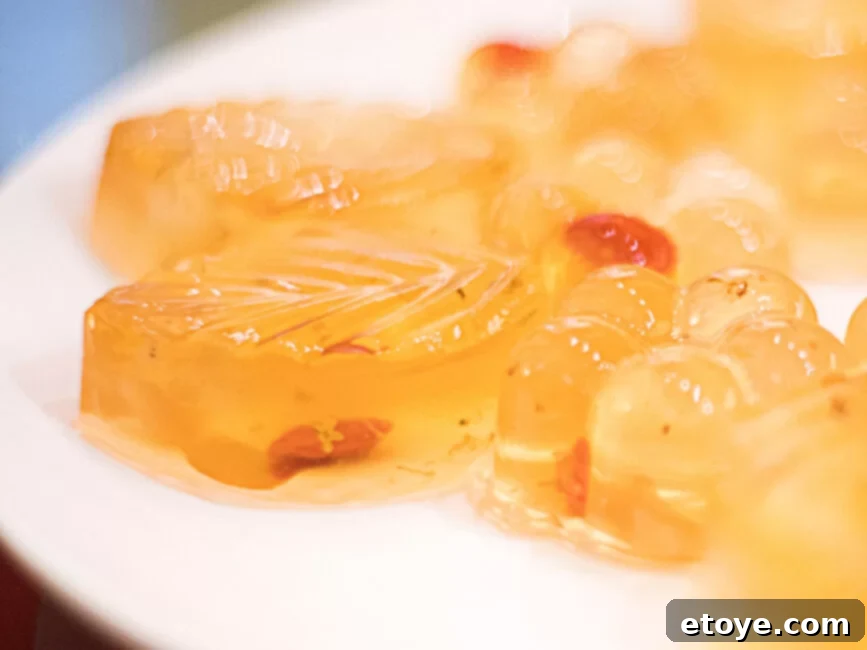
About: Gui Hua Gao, or Osmanthus Jelly, is a beautifully delicate and fragrant dessert that offers a refreshing contrast to the often richer, heavier festive treats. This elegant jelly is infused with the subtle, sweet aroma of dried osmanthus flowers, which are highly prized in Chinese culture for their beautiful scent and delicate flavor. Often prepared with a clear, shimmering appearance, it can be molded into intricate shapes like fish or flowers, adding to its visual appeal. Each bite delivers a light, floral sweetness that tastes like a gentle whisper of spring, making it a perfect palate cleanser and a refreshing conclusion to a celebratory meal. It’s a sophisticated and understated Chinese New Year dessert that showcases the beauty of natural floral flavors.
What It Symbolizes: The osmanthus flower (桂花, “guì huā”) holds significant cultural meaning in China, symbolizing love, romance, nobility, and good fortune. In traditional Chinese art and literature, osmanthus is often associated with the moon and immortality. When incorporated into Gui Hua Gao, the jelly dish generally represents friendship, success, and favorable fortune. Its delicate nature and beautiful fragrance are seen as a wish for a graceful, harmonious, and flourishing year. Enjoying Osmanthus Jelly is an elegant way to invite subtle blessings, enduring friendships, and serene success into the upcoming Lunar New Year.
Recipe Page: If you’re inspired to create this aromatic and visually appealing dessert, Nancy from Nomss.com has a lovely Osmanthus Jelly recipe that is both simple to follow and delightful to taste. Find her recipe here: Nomss.com Osmanthus Jelly Recipe.
10. Fah Sung Thong (Peanut Brittle)
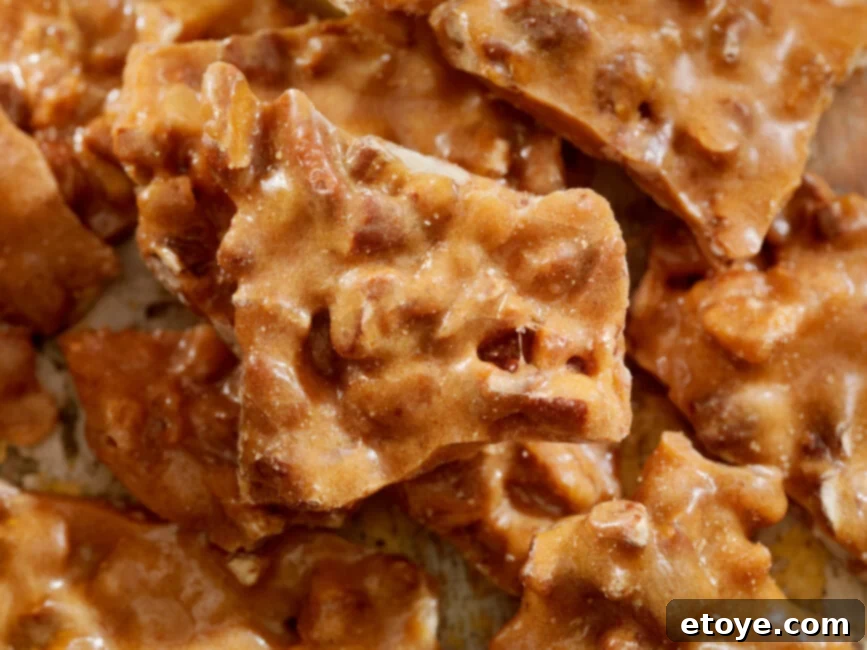
About: Last but certainly not least on our list of cherished Chinese New Year desserts is Fah Sung Thong, or Peanut Brittle. This classic crunchy treat is a perennial favorite during the festive season, celebrated for its satisfying snap and irresistible nutty sweetness. Made with roasted peanuts and often enriched with sesame seeds, it’s bound together by a caramelized sugar syrup that hardens into a delightful, brittle confection. The combination of toasted peanuts and sesame seeds creates a complex flavor profile that is both savory and sweet, offering a perfect balance of crunch and rich taste. It’s a snack that’s easy to share and always brings a smile, making it a staple in many festive homes.
What It Symbolizes: Fah Sung Thong carries significant auspicious meaning, primarily symbolizing health and longevity in Chinese culture. Peanuts, known as “hua sheng” (花生) in Mandarin, have a name that sounds like “sheng” (生) meaning “to give birth” or “to grow,” implying a wish for continuous growth, vitality, and prosperity. Additionally, peanuts are associated with health benefits and a long, stable life. The brittle’s sweet taste also represents a “sweet life,” full of happiness and good fortune. By enjoying Peanut Brittle, celebrants express a wish for robust health, enduring life, and a prosperous future, making it a truly wholesome and meaningful Chinese New Year dessert.
Recipe Page: For those eager to craft their own batch of this lucky and delicious brittle, Linda from Roti n Rice provides an excellent Peanut Brittle recipe. You can find her detailed instructions here: Roti n Rice Peanut Brittle Recipe.
And that concludes our delightful journey through the world of traditional Chinese New Year desserts! We hope you’ve savored every virtual bite, learning about the rich history, intricate flavors, and profound symbolism behind these beloved treats. From wishes of prosperity and growth to desires for family unity and good health, each dessert tells a unique story and contributes to the joyous tapestry of the Spring Festival. Whether you choose to bake these recipes at home, supporting local Chinese bakeries, or simply enjoy them during your celebrations, the true essence lies in embracing the culture and sharing these sweet moments with loved ones.
May your year be as sweet, fulfilling, and prosperous as these cherished traditional Chinese New Year desserts. We wish you and your family a truly happy and auspicious New Year filled with joy, health, and abundant good fortune!

More Chinese New Year Recipes to Explore
- Chinese New Year Recipes + Superstitions
- Chinese New Year Recipes – Party Like It’s 4707!
- Chinese New Year Recipes: What to Eat If You Want More Money!
- What to Eat for Chinese New Year
